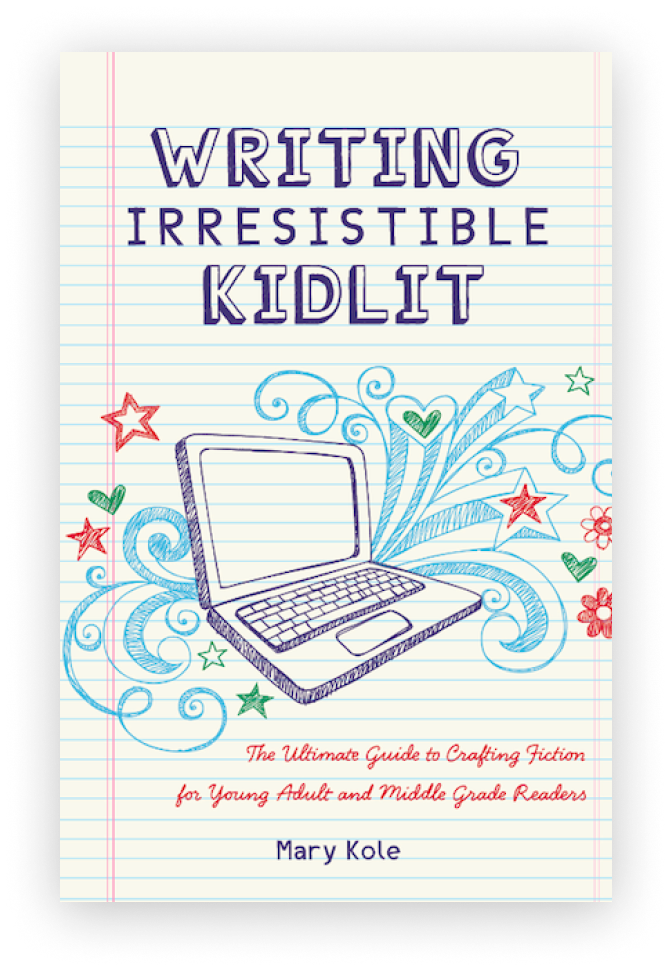Are You a Writing Pantser?
By Mary Kole
Mary Kole is a former literary agent, freelance editor, writing teacher, author of Writing Irresistible Kidlit, and IP developer for major publishers, with over a decade in the publishing industry.
If you're an aspiring writer, you've probably heard the term "pantser" thrown around in writing circles. But what exactly does it mean? Well, a "pantser" is someone who writes by the seat of their pants, meaning they don't necessarily plan out their story or do a story outline before they begin drafting. Instead, they dive right in and let the story unfold as they go. In this article, I’ll explore the world of pantser writing, including the drafting process, the benefits, and the potential shortcomings of pantsing. We'll also touch on effective revision techniques that can help a pantser writer complete a story that is both cohesive and captivating.
How a Pantser Writes
So, how does a pantser go about writing a story? First, there really are no rules—any writer can write a manuscript however they please. But typically, a pantser starts with a general book idea or premise for their story, followed by an initial brainstorm for a few characters who will inhabit their story world. From there, the writer jumps straight into writing without a novel outline or detailed storytelling structure in mind. While this may seem daunting to some, it can also be a thrilling and creative experience for others. When you let go of the need to control and plan every detail, there's space for something unexpected to happen, resulting in character development and plot elements that even the writer may not have predicted.
But what are the benefits of taking the pantser approach? For one, it allows for flexibility and creativity during the drafting process. Because there's no rigid story outline to follow, a pantser can take the story in any direction they choose. They’re able to pivot to new conclusions or character developments at any time. Additionally, for writers who find outlining tedious or formulaic, the pantser approach can be a freeing and exciting way to write. It allows for the element of surprise and can keep the writer engaged in the project, looking forward to seeing where the story takes them.
What’s Wrong with Being a Pantser?
However, a pantser approach isn't without its shortcomings. Without a clear plan, it's possible for a writer to become lost. Their plot might become convoluted or lose its way entirely. It can feel aimless. It can be easy for a pantser to write themselves into a corner without a clear escape route. So, what's the solution? One useful tip is to create a reverse outline once the first draft is complete, so you can get more organized once you know what you’re working with. This means stepping back and reviewing what's already written and then creating an outline that summarizes the story as it is. This process can help identify any plot holes or character inconsistencies, allowing the writer to make necessary revisions and be more intentional with shaping the story in subsequent revision rounds.
And, speaking of revisions, how does a pantser writer revise their work effectively? One of the most useful techniques for a pantser is utilizing a writing partner, writing workshop, beta reader, or developmental editor. These outside perspectives can help identify areas where the story could be stronger or more cohesive. Another helpful tip is to take a break after the first draft is complete to give yourself some perspective and distance before diving back into revision. Lastly, creating a detailed timeline or character map can help ensure consistency and accuracy throughout the story.
If you're an aspiring writer who hasn't tried the pantser approach, it might be worth considering. I personally think that drafting involves some pantsing, even if a writer has a story framework in place. The creative benefits are worth it! While it's not for everyone and there are certainly pitfalls to avoid, it can be an exciting and freeing way to approach a writing project. By being aware of the potential difficulties and implementing revision techniques like creating a reverse outline and utilizing third-party writing feedback, a pantser can produce a strong and captivating story. So, why not give it a try and see where your writing takes you? That’s literally the point of being a pantser.

Click here to purchase Writing Irresistible Kidlit, my book on fiction craft for MG and YA novels, out from Writer's Digest Books. This will show you my writing craft philosophy and give you lots of valuable advice, including tips for the novel revision process and self-editing. There are over 35 example novels cited and discussed throughout. It’s a valuable resource for any writer’s toolkit.
Click here to purchase Irresistible Query Letters, my book on query letters, including over forty examples with comprehensive notes on each one. There’s a ton of submission advice, best practices, and insider information in these pages, and you’ll really enjoy seeing what other writers are doing in the slush.




